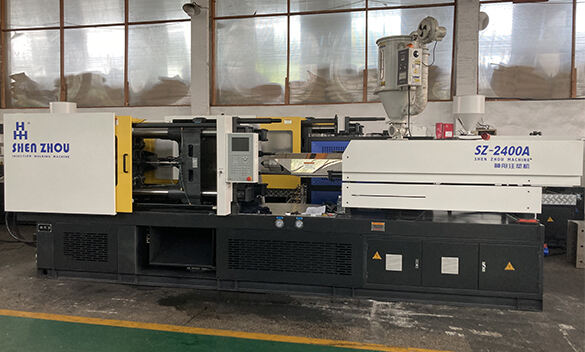Injection molding machines have become an integral component in the manufacturing industry due to their efficiency and ability to produce complex plastic parts at scale. First developed in the early 20th century, these machines have evolved significantly, boasting advanced technologies that enhance their durability and longevity. Understanding their lifespan is essential for manufacturers who rely heavily on these machines to maintain consistent production quality and financial planning. Injection molding machines can last for decades, typically ranging from 10 to 30 years, depending on various factors such as maintenance, usage, quality, and technological advancements. Factors Affecting the Longevity of Injection Molding Machines
1. Quality of the Machine - Build Quality: The initial build quality of an injection molding machine significantly determines its lifespan. Machines manufactured by reputable brands and built with high-quality materials often last longer. These machines are designed to withstand the high pressures and temperatures involved in the injection molding process. - Technological Advancements: Over time, technological improvements have enhanced the durability and efficiency of these machines. Modern machines incorporate advanced materials and designs that reduce wear and tear, thus extending their lifespan.
2. Maintenance Practices - Regular Maintenance: Consistent and thorough maintenance is crucial for the longevity of any machinery. Routine checks, timely repairs, and the replacement of worn-out parts can prevent minor issues from developing into major problems. Well-maintained machines are less likely to experience frequent breakdowns and can operate efficiently over a more extended period. - Preventive Maintenance Plans: Many manufacturers implement preventive maintenance plans, which involve scheduled inspections and servicing aimed at detecting and addressing potential issues before they escalate. This proactive approach can significantly prolong the machine's operational life.
3. Usage Intensity - Operating Hours: The number of hours an injection molding machine operates daily plays a critical role in its lifespan. Machines that run continuously or for extended periods each day are subject to more wear and tear compared to those that are used less intensively. - Load and Capacity: Operating the machine within its intended capacity and avoiding excessive loads is essential to prevent overstraining the components. Machines consistently pushed beyond their limits tend to have a shorter lifespan.
4. Environmental Conditions - Operating Environment: The conditions in which the machine operates can impact its longevity. A clean, temperature-controlled environment reduces the risk of dust accumulation and overheating, both of which can cause damage to the machine's components. - Climate Factors: Machines used in harsh climates (extreme cold or heat) may require additional care and precautions to protect against environmental damage. Ensuring proper ventilation and climate control is vital for their longevity.
5. Technological Upgrades and Retrofits - Upgrading Components: As technology advances, older machines might benefit from component upgrades or retrofits. Replacing outdated control systems, adding automation features, or improving energy efficiency can not only extend the machine's lifespan but also enhance its performance. - Adoption of New Technologies: Staying abreast of technological advancements allows manufacturers to incorporate state-of-the-art features into their existing machines. This practice can mitigate the impact of wear and tear and ensure that the machines remain competitive in terms of performance and efficiency. ConclusionIn summary, the lifespan of an injection molding machine varies based on an array of factors such as build quality, maintenance practices, usage intensity, environmental conditions, and the incorporation of technological upgrades. By investing in high-quality machines and adhering to stringent maintenance routines, manufacturers can significantly enhance the durability and operational efficiency of these vital pieces of equipment. It is crucial to recognize that while some machines may last only a decade, others can remain operational for 30 years or more, reflecting the careful balance between technology and maintenance.
FAQ
Q1: How often should maintenance be performed on injection molding machines?
Maintenance should ideally be performed on a regular schedule, often monthly or quarterly, depending on the machine's usage intensity and manufacturer guidelines.
Q2: Is it cost-effective to upgrade older injection molding machines?
Yes, in many cases, upgrading key components of older machines can be cost-effective and extend their operational life.
Q3: Do environmental conditions affect the lifespan of injection molding machines?
Yes, machines operated in clean, controlled environments generally last longer compared to those in harsh or fluctuating climates.
Q4: Can preventive maintenance reduce unexpected downtime for injection molding machines?
Absolutely, preventive maintenance can identify and address potential issues before they cause significant breakdowns, thus reducing unexpected downtime. By considering these factors and making informed decisions, manufacturers can ensure the reliability and longevity of their injection molding machines, optimizing their production processes and maintaining high-quality standards.



